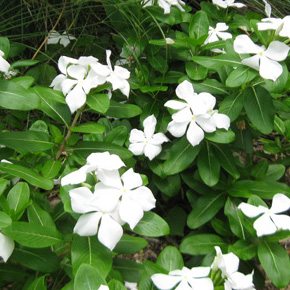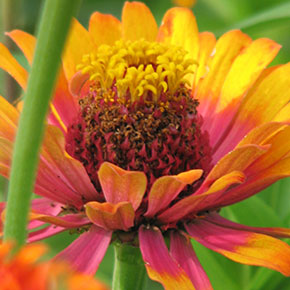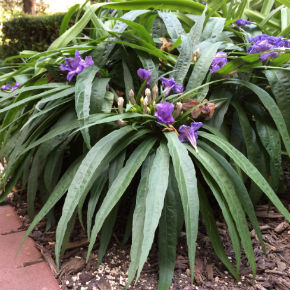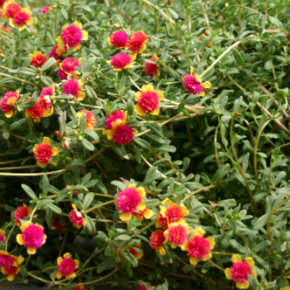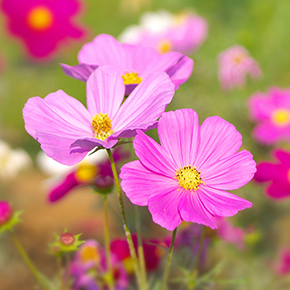Annuals are not typically recommended as drought-tolerant, low maintenance plants. But we’ve discovered a few select varieties to be as heat-hardy and carefree as most perennials.
Normally we recommend perennial shrubs and trees as drought-tolerant, low maintenance plants rather than annuals, which as a rule use more water and are only seasonal.
But I’ve found selected annuals to be as drought-tolerant and carefree as most perennials, and have on occasion returned the following year. Do you want to plant an annual in the spring, water it a couple of times, and then basically forget about it? Of course you do!
Periwinkles
|
Periwinkle, aka vinca, have been a recommended annual flower for decades, but it has recently fallen victim to an airborne fungus known as aerial Phytophthora. However, the ‘Cora’ series is resistant to almost all fungi and so drought-tolerant that I’ve seen it growing in sidewalk cracks. The only way to kill it is to water it or wait for winter. |
Zinnias
|
There are a host of varieties derived from the hybridization of Zinnia angustifolia and Zinnia elegans , ranging in a veritable profusion of heights and colors. In fact, one such hybrid is called ‘Profusion’ and another is ‘Dreamland.’ I’m not talking about those, however. The really tough, no-pest, no-water annual flower is Zinnia angustifolia var linearis. It comes a variety of colors: white, yellow, orange and gold. After establishment, water once to twice a month. |
Petunias
|
Science has dramatically improved the heat and drought tolerance of petunias. Look for V.I.P. or ‘Laura Bush’ selections. These are the small, deep purple flower-mounding varieties. Additional benefit: it’s a reseeding annual. |
Moss Rose
|
Does anyone remember which is which? I don’t. Fortunately, they’re all the genus Portulaca spp, but some are single flowers and some are doubles. The easiest way to identify Purslane and Portulaca is by leaf length, width and thickness.
Purslane (on the left) and moss rose have thick, rounded leaves. Portulaca (on the right) has thinner, pointed leaves. Both are succulents so watering weekly is optional but recommended, unless they’re planted in a hanging basket, then bi-weekly watering is mandatory. |
Cosmos
|
Some folks think of cosmos as a perennial, but it’s actually a re-seeding annual. Cosmos sulphureus or yellow cosmos is native to Mexico and South America, but is just as adaptable to South Texas. Many improved varieties to choose from but all have the same features: full sun, limited water, fertilizer discouraged, pests unknown and blooms for an entire summer. No time, no problem with cosmos! |


